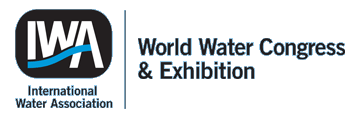Integrated Infrastructure Asset Management
Ben Ward
2012
WS&T |12
A multi-objective optimisation model for sewer rehabilitation consider ciritcal risk of failure
A unique methodology for the optimal specification of sewer rehabilitation investment is presented in this paper. By accounting for the critical risk of asset failure, this methodology builds on previously successful work which explored the application of multi-objective optimisation tools to assist engineers with the specification of optimal rehabilitation strategies. The conventional sewerage rehabilitation specification process relies on the expertise of professional engineers to manually evaluate CCTV inspection information...
Ward B and Savić D (2012)
A Multi-objective Optimisation Model for Sewer Rehabilitation considering critical risk of failure. Journal of Water Science & Technology, 66(11): 2410–2417. DOI:10.2166/wst.2012.393.














































Busan |12
I had the privellage of attending the IWA's biennial World Water Congress in Busan this year. It was an excellent opporuntity to present my work and to mix with industry leaders.

IWA World Water Congress, Busan
Quantitative Risk Analysis for Long Lived Water Assets
A suite of risk based modelling tools has been developed to assist water companies in the production of asset management plans for long-lived and highly critical water assets. The authors present a Quantitative Risk Analysis (QRA) framework which is founded on customisable models for the assessment of asset reliability, consequence of failure and intervention optioneering. The approach has been applied within the UK water industry to a variety of linear and non-linear water carrying assets of critical importance; tunnels, conduits, masonry aqueducts, pipe bridges and service reservoirs. The overall goal of the QRA framework is to permit the identification of optimised maintenance regimes and pro-active intervention options which can be planned systematically, giving due consideration to asset risk.
The paper specifically focuses upon the innovative reliability modelling tools that the authors have developed which form the foundations of the overall QRA framework. These take the form of deterministic models, physical probabilistic models and an enhanced condition to reliability mapping technique.
Case Study |12
International Case Studies in Asset Management
by Chris Llyod
South West Water Case Study, Chapter 4
I provided a sewerage asset management best practise case study for Chris Llyod to use as a chapter in his book. The case study outlines the methodologies and tools that AECOM have developed for South West Water - for which I have acted as technical lead in their development and implementation.

Poster |12
British Water Innovation Exchange
AECOM's Asset Investment Suite
The event was aimed at bringing together South West Water, their partners and suppliers to identify technology needs and explore available and potential solutions. I presented a poster at this event to demonstrate the innovative sewer rehabilitation work we are carrying out.

